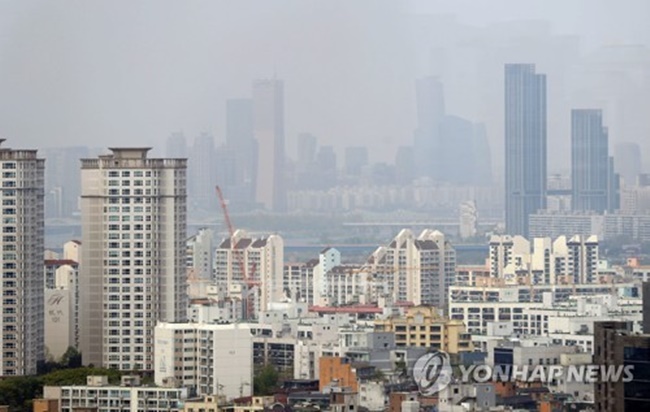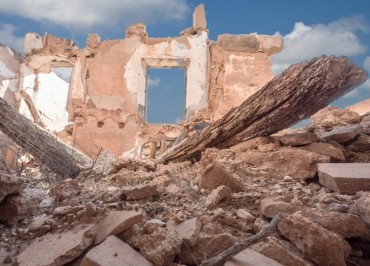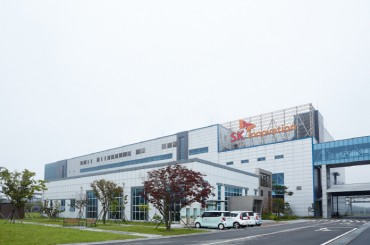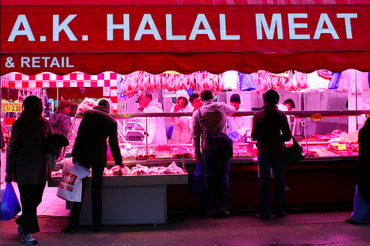
Some health-conscious parents opt to have their kids skip school when the fine dust is so bad, with sales of air-quality control items such as air purifiers and other accessories like dust masks spiking every year as consumers scramble to spend money on anti-dust products. (Image: Yonhap)
SEOUL, April 26 (Korea Bizwire) – South Korea has far too lenient regulations on fine dust measurement and needs to toughen the threshold to better inform the public of the air quality amid the worsening climate here, experts here said Wednesday.
According to the Ministry of Environment, a daily average of over 50 micrograms of ultra-fine dust is the threshold for South Korea to call bad weather for the day, whereas the minimum level for the United States and Japan stands at 35 micrograms.
The ministry said the measurement standard was first adopted in 1995 with the air quality taken into account at that time, in accordance with the World Health Organization (WHO) guidelines.
However, growing health concerns over worsening air quality due to intensifying seasonal fine dust have unnerved citizens here, calling for stricter rules on the management of fine dust particles.
Some health-conscious parents opt to have their kids skip school when the fine dust is so bad, with sales of air-quality control items such as air purifiers and other accessories like dust masks spiking every year as consumers scramble to spend money on anti-dust products.
Experts have criticized the government’s forecast on fine dust that usually tends to reassure citizens about taking part in outside activities, saying that even a “normal level” may not be safe for some people.
“(A bad level) should be OK for healthy people, but definitely not for asthmatic, diabetic patients or those with high blood pressure or a heart condition. It’s high likely that the symptoms will get worse,” Lim Jong-han, a medical professor at Inha University.
He stressed the need to revise the threshold to the same level as developed nations, calling for a re-evaluation of energy policies.
The ministry said it has been looking into amending the related law, with the possibility of strengthening the rule to 35-37.5 micrograms.
(Yonhap)






